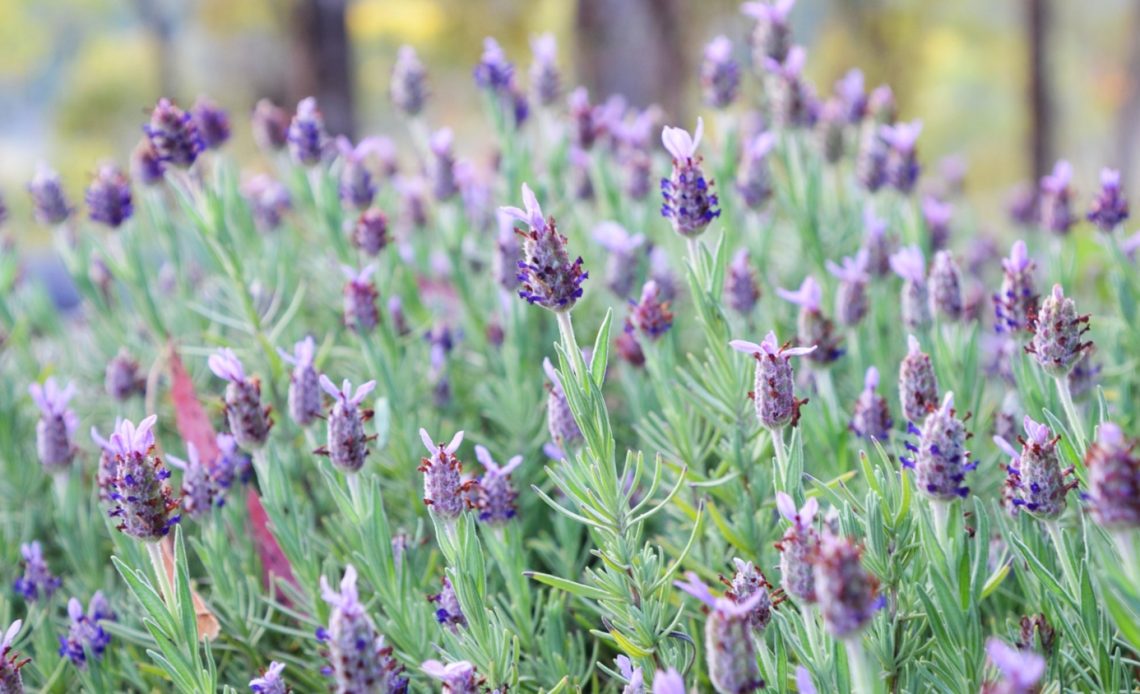

We’re here to help! Wild Yards is a completely free website that is 100% dedicated to helping you create a wildlife-friendly, sustainable yard. Read more
WildYards is reader-supported. When you buy a product through a link on our site, we may earn a comission. Every product is independently selected by our (obsessive) editors and our reviews are unbiased and objective. Read more about our mission or our privacy policy.
Lavender is incredibly popular with beneficial insects, like bees and butterflies. So if you want to support your local pollinators, it’s a worthy addition to your landscape.
This fragrant herb is also perfect for attracting more hummingbirds to your yard. Plants can easily be started from seeds and used as accent plants and low-growing hedges.
Lavender is a hardy little shrub that thrives in heat, full sun, and dry, sandy soils. But if you notice your lavender turning brown, you may be wondering what’s going on, and what you can do to save your plant.
Lavender typically turns brown when it has been underwatered or overwatered. However, diseases like powdery mildew can also contribute to dying foliage.
7 Reasons lavender turns brown and what you can do to save it
Lavender is disease-resistant, pest-resistant, and tolerant of hot, dry environments. That said, these plants can still be quite delicate.
Lavender is not without its pitfalls. Understanding why your lavender plants might be turning brown will help you treat the plants successfully.
Here are a few reasons why your lavender plant’s leaves may be turning brown — plus helpful solutions so you can get your plants back on track!
The problem: Underwatering
If your lavender’s leaves are brown and crunchy, check the soil an inch below the surface. If it feels dry and powdery, there’s a good chance the plant is in desperate need of a drink.
Lavender is native to the Mediterranean region, where it stays hot and dry. But even though lavender is drought-tolerant, it still needs adequate moisture to survive.
It’s worth noting that potted lavender plants are far more susceptible to underwatering than those planted directly in the ground.
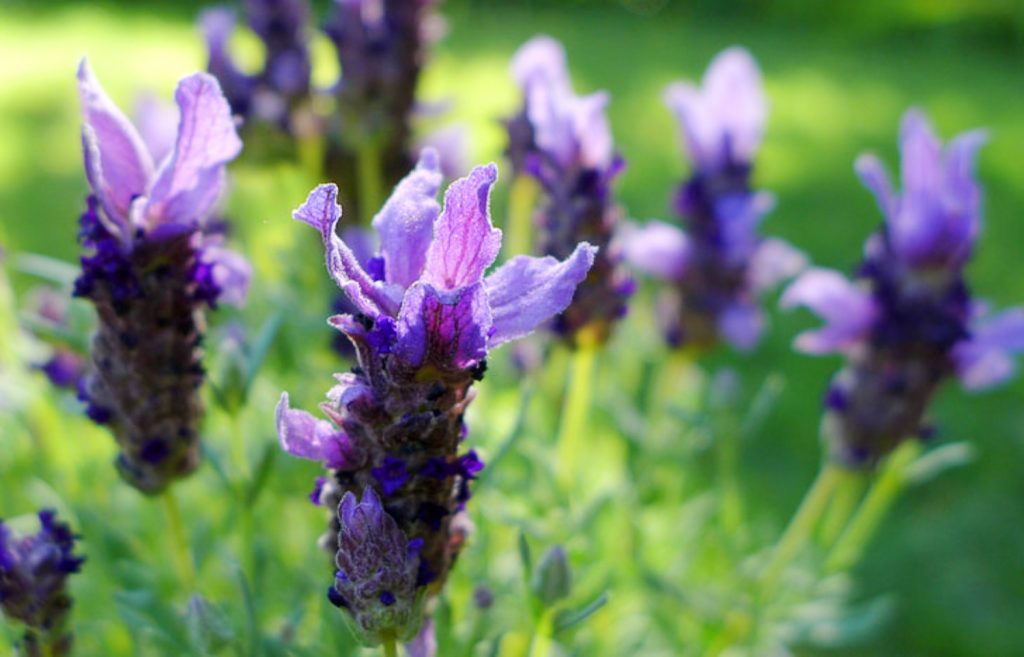
The solution: Give the plant a drink!
If your lavender’s soil feels dry, give it a good soaking watering.
As a rule of thumb, lavender plants need an inch of water every two weeks. But plants growing in especially hot, dry climates may need more than this.
Water potted plants until you can see water coming out of the drainage holes on the bottom of the pot, to make sure you’ve reached the plant’s deepest roots.
Lavender doesn’t like to be overwatered. So you’ll need to make sure the plants dry out thoroughly in between waterings. But plants should be watered regularly, especially if they’re in pots, to keep them hydrated.
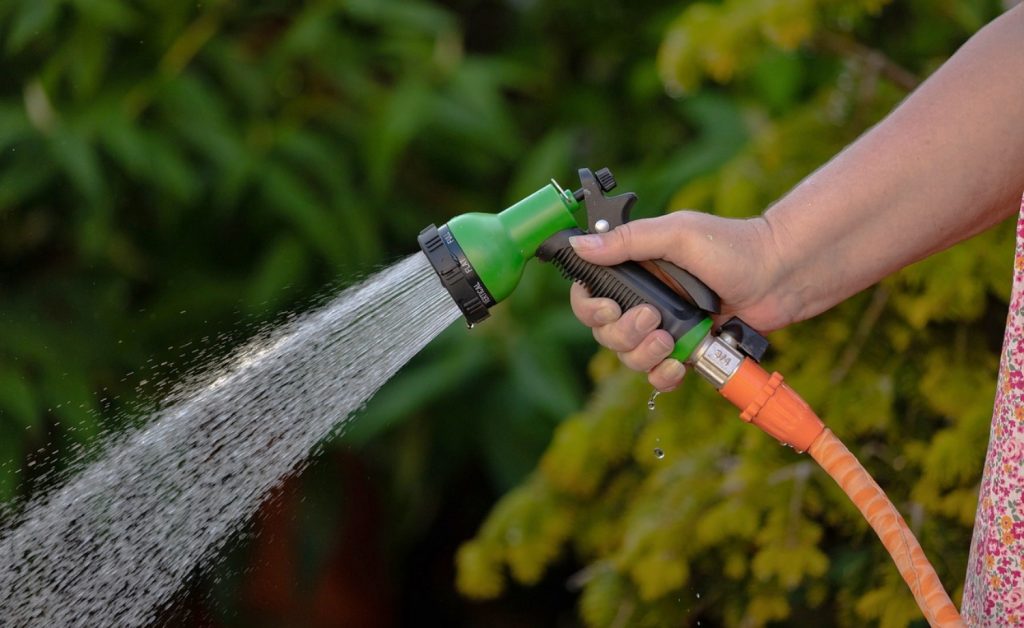
The problem: Overwatering
Another reason why your lavender may be turning brown is that it has been overwatered. Again, you’ll need to check the soil. If the ground is muddy or feels soggy, those are good signs your lavender is drowning.
Overwatered lavender tends to become brown and wilted. The foliage may feel limp and gummy, as opposed to dry and crunchy.
Because lavender is so drought-resistant, it is far more susceptible to overwatering than underwatering.
Plants that are growing directly in the ground are more likely to be overwatered than potted plants.
That said, lavender that is growing in a container garden with the wrong companion plants, like water-loving mint, may also succumb to overwatering.
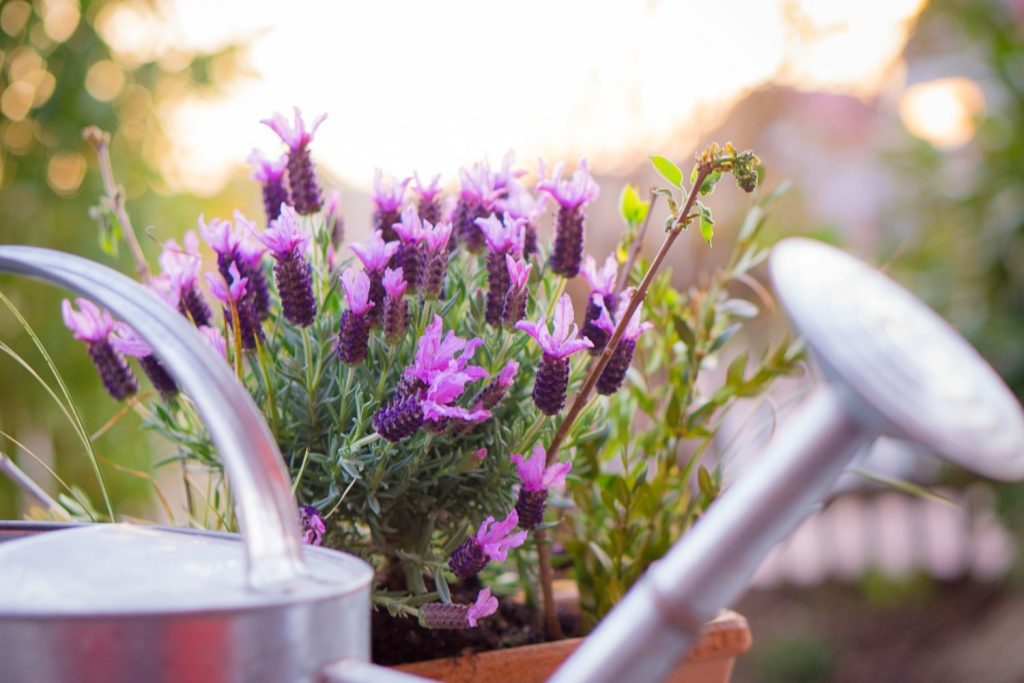
The solution: Turn off the hose!
If your lavender is turning brown and wilting because it has been overwatered, stop watering it.
Move potted plants up onto your porch to protect them from rain. Drill holes into the bottom of the pots, and consider repotting the plants entirely, placing gravel in the bottom of the hole to encourage good drainage.
Leaving the lavender plant out on paper towels overnight will give the roots a chance to dry out before being repotted.
Be sure to plant your lavender in sandy soil, or a potting soil specifically designed for lavender. These plants hate sitting in boggy soils. So whether you grow your lavender in containers or directly in the ground, be sure to amend the soil to suit its needs.
The soil should be loose and sandy to loamy. Remember to feel the soil before watering the plants. Allow the soil to dry out completely in between waterings to give the plants a chance to breathe.
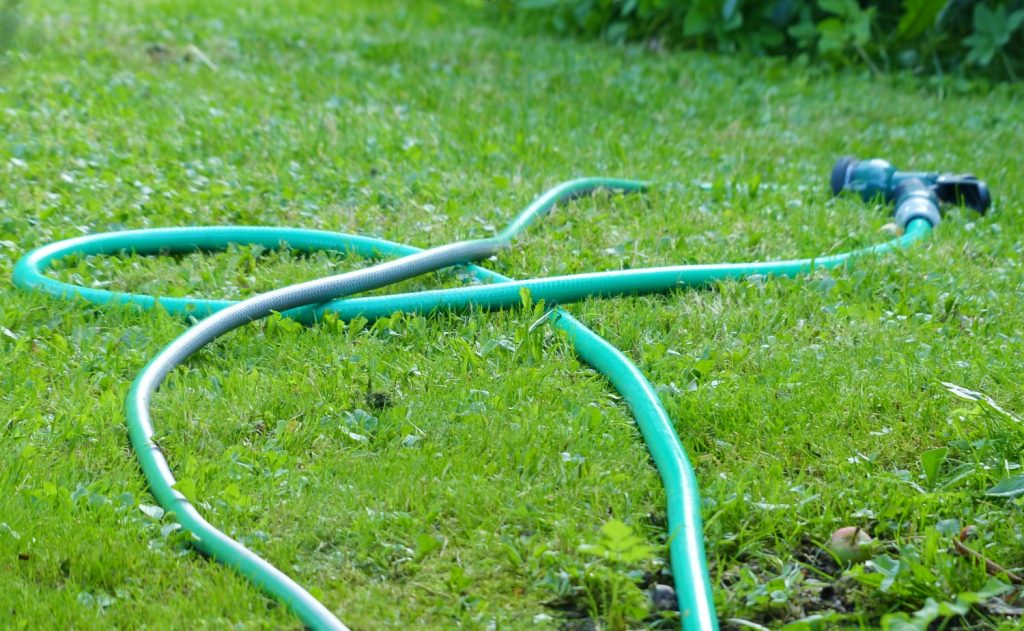
The problem: Root rot
Sometimes, you only notice that your lavender has been overwatered when it’s too late.
If you’ve given your once overwatered lavender plenty of time to dry out, and its appearance still hasn’t improved, there’s a good chance it has developed root rot.
Lavender that has developed root rot will turn yellow and brown at the base of the plant. The plant may also wilt and become droopy.
The spores that cause root rot thrive in moist soils. And, unfortunately, lavender is particularly susceptible to this disease.
If you catch root rot early, you may be able to treat it successfully — especially if your lavender plant is healthy otherwise.
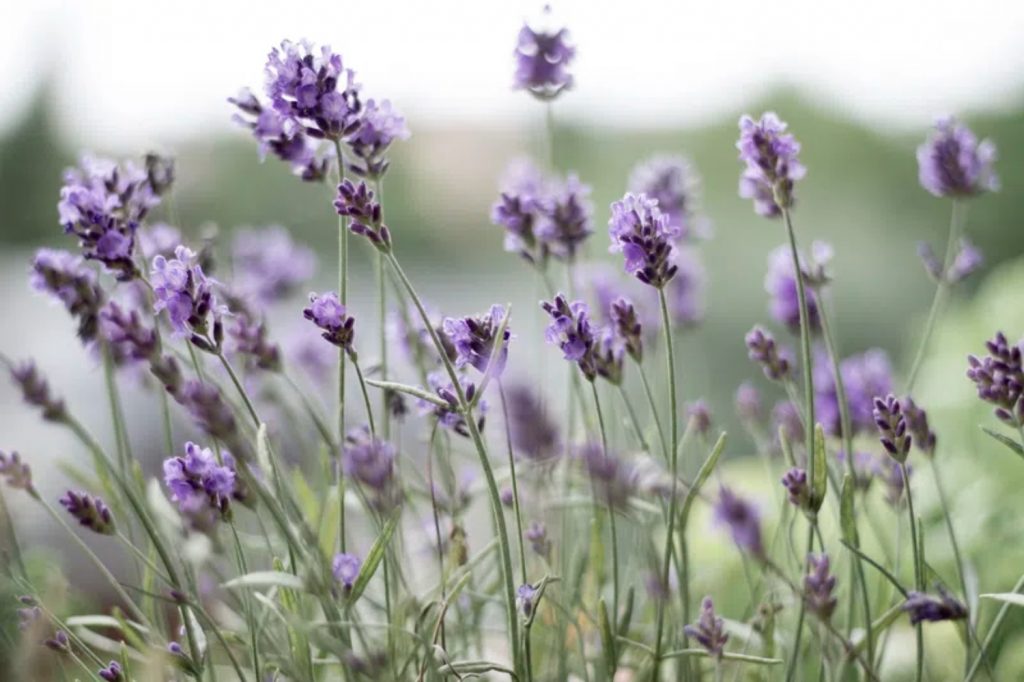
The solution: Prune infected roots
If you’ve identified the symptoms of root rot, there’s only one thing to do.
Remove the lavender from the soil, and gently tap the dirt away from the roots, being careful not to damage the plant. Then, use pruning shears or scissors to trim away the infected roots.
Roots that are infected with root rot will be black and spongy. They may also smell like they’re rotting.
Be sure to remove all of the infected roots, spraying your pruning shears with a bleach dilution in between each cut to avoid spreading the spores to healthy parts of the plant.
If more than half of your lavender plant’s root system is infected, then the plant’s chances of survival are slim. Consider purchasing a new plant — just be sure to plant the new lavender in new soil, so it doesn’t catch the same infection.
The problem: Insufficient sunlight
If your lavender isn’t getting enough sunlight, it will develop a yellow cast and an anemic appearance. Over time, its foliage will turn brown. The plant’s growth rate will also slow down.
Like other plants, lavender uses a process called photosynthesis to produce food for itself.
But if the plant doesn’t get enough sunlight, it won’t be able to turn the carbon dioxide, water, and nutrients it absorbs from its environment into energy.
Keep an eye on your lavender throughout the day. Lavender needs 6 or more hours of sun. If the plant is getting less than that, its health will suffer.
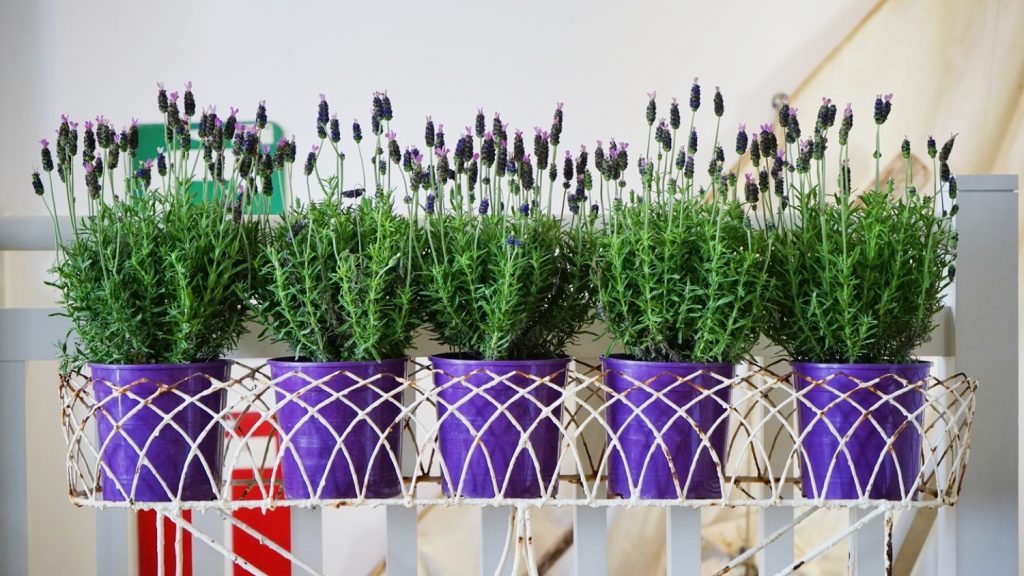
The solution: Move the plant to a sunnier location
If your lavender is demonstrating a slower-than-average growth rate, and if its foliage is turning yellow and brown, move the plant to a sunnier location and wait a week or two.
Once the plant has had a chance to make some food for itself, its appearance will improve quickly.
Healthy lavender is bright green to gray-green, depending on the cultivar. Once your lavender plant’s foliage has turned brown, those leaves won’t regain their color.
But, once the plant is able to produce more energy, its color will return to the living leaves, and to any new leaves the plant produces.
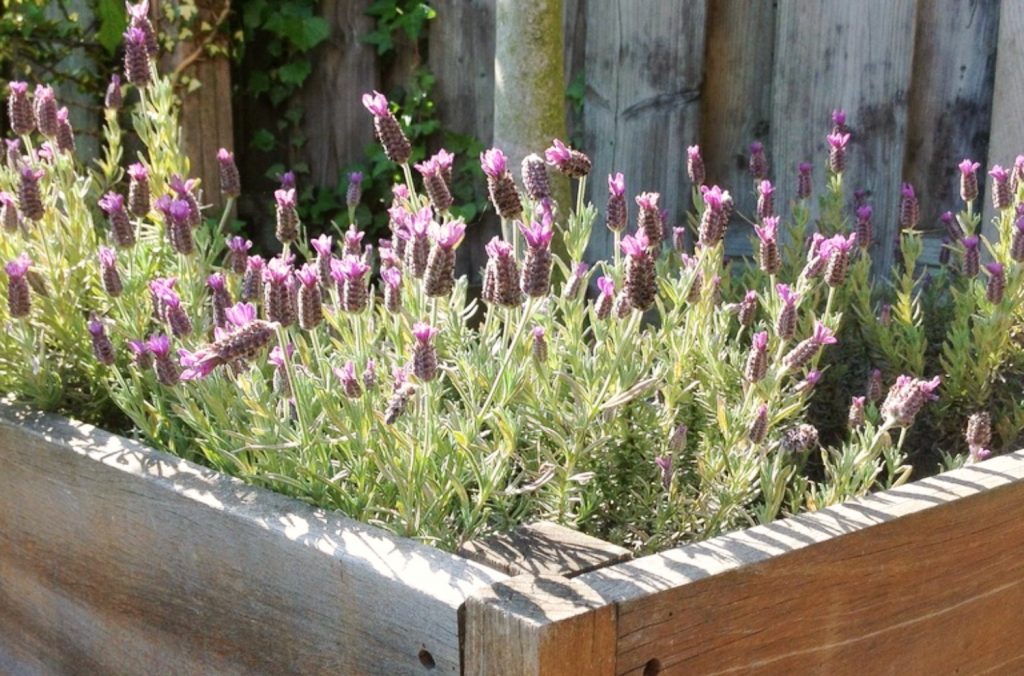
The problem: Too much sunlight
Lavender loves sunlight, but it’s still possible for plants to get too much of it. This is especially true if you live in a particularly dry, arid climate.
If your lavender is getting too much sunlight, the symptoms will be similar to if the plant was being under-watered. However, no matter how much you water the plant, it won’t recover.
If your lavender plant is sporting a ton of brown leaves and looks unhealthy overall, then watch it throughout the day to see how much sunlight it’s getting in its current location.
Although lavender tends to grow best when it receives 6 or more hours of sunlight per day, 6 hours may be too much for the plants in hotter environments — especially if the lavender is growing all by itself without some kind of ground cover to protect it from rapid hydration loss.
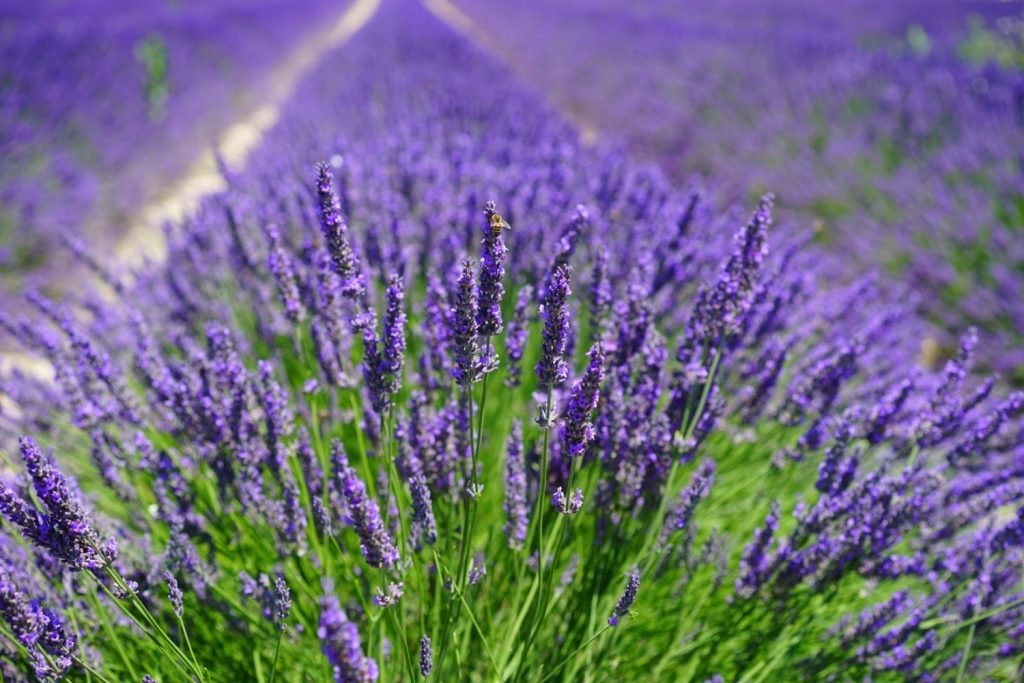
The solution: Give the plant some shade
Move potted lavender plants up onto your porch during the hottest part of the day to help them conserve moisture. Consider transplanting lavender that has been planted directly in the ground to a location that receives morning sun and dappled afternoon shade.
Planting lavender near the appropriate companions will help the plants survive harsher environments.
Grow your lavender near coneflowers and African daisies. Grown together, the plants will shield the ground below from the harsh heat of the sun.
Rosemary and thyme are two herbs that grow well near lavender. Alliums, like chives and garlic, also grow well near lavender.
Once your lavender plant has had a chance to recover from excessive sun exposure, the plant will perk back up. New growth will appear healthy and green.
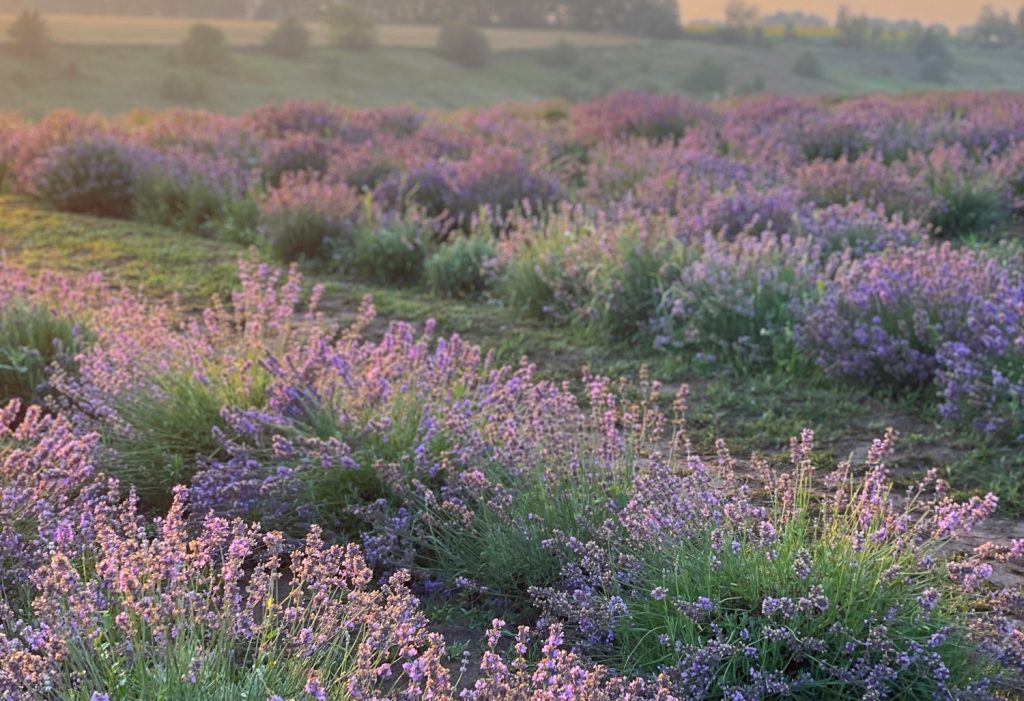
The problem: Powdery mildew
Lavender isn’t susceptible to too many diseases. If your lavender is sick, then it’s most likely due to one of two reasons. The first is root rot, and the second is powdery mildew.
Powdery mildew is a fungal disease that creates a gray or white powdery substance on the stems and leaves of a plant.
It’s worth noting that some lavender cultivars naturally have a gray-green appearance. Powdery mildew is grayer by comparison. It can also cause the plant’s leaves to curl and turn yellow and brown.
Powdery mildew also causes plants to become stunted and to grow misshapen branches. Plants may suffer from leaf drop, and may not produce as many flowers as they should.
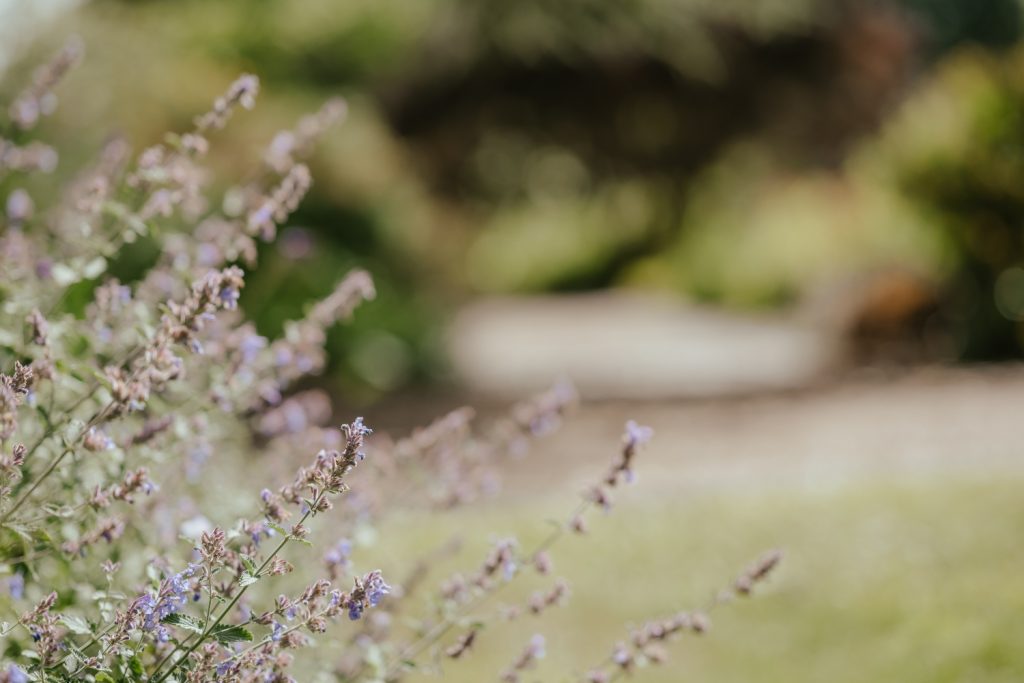
The solution: Use an herbicide
Powdery mildew can have devastating effects on a plant, whether the plant in question is lavender or something else. So you’ll need to act fast.
Stir 2 to 3 tablespoons of apple cider vinegar into a gallon of water, and use this solution to spray infected plants. Alternatively, you can stir a tablespoon of baking soda with 2 to 4 drops of liquid dish soap into a gallon of water, and use this mixture instead.
Spray all parts of the plant, being sure to coat the undersides of the leaves as well as the tops.
It may take several applications to get the infection under control. But, once you have, the plant’s appearance will improve.
The problem: The plant has become rootbound
Plants will grow to fill the space they’re given. And once they’ve filled that space, they’ll keep growing until their roots wrap around each other and suffocate the plant.
If your potted lavender has turned brown, take a closer look.
Do you see roots sprouting out of the drainage holes? If you wiggle the base of the plant, do the contents of the pot move together as one giant dirt clod?
If so, these are both signs that your lavender is rootbound.
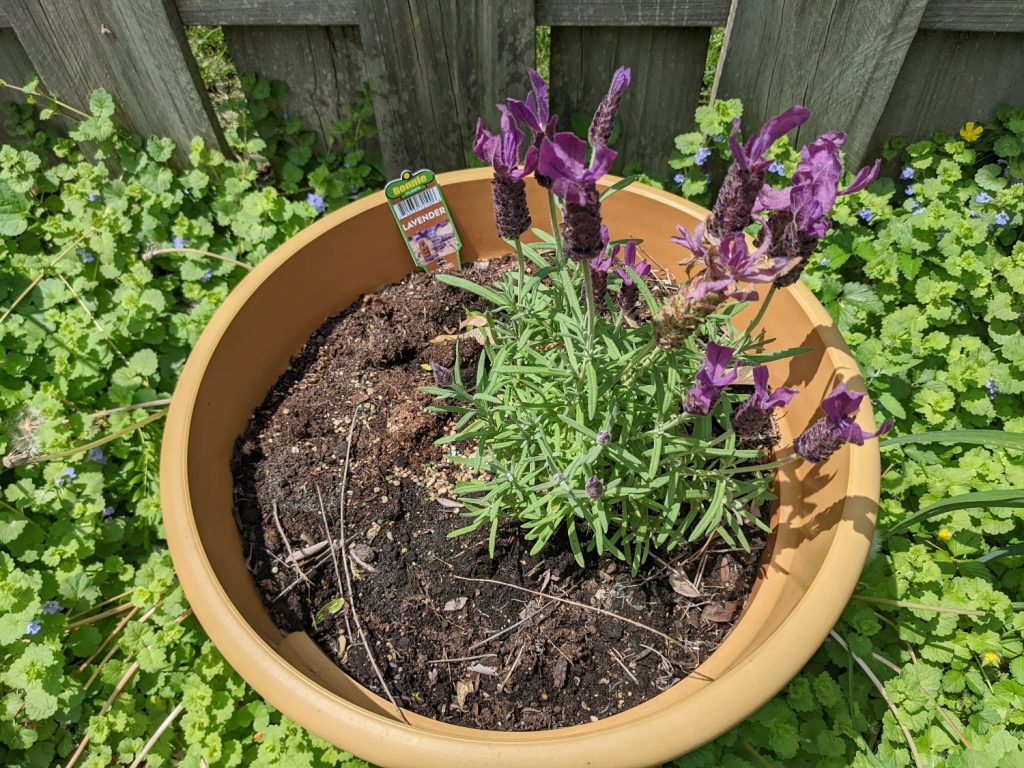
The solution: Give the plant more root space
If you want to keep growing your lavender in containers, then choose a new pot that is at least twice as large as the lavender’s previous one.
Make sure to drill drainage holes in the bottom, and use sandy potting soil that drains well. Tamp around the plant as you go to remove air pockets, and water the plant well when you’re done.
If you’d prefer to transplant your lavender to the ground, then dig a hole that is twice as wide and as deep as the plant’s roots. Keep the root collar level with the ground, and backfill around the plant gently so as not to upset the roots.
Contrary to popular belief, there is no need to prune a rootbound plant’s roots.
Research shows that cutting the roots of a rootbound plant offers no real benefits, and may even hinder the plant’s ability to get established in its new home. Simply giving the lavender more room is enough to improve their health.
Tips for growing healthy lavender
Meeting all of your lavender’s growing requirements is the best way to keep plants healthy.
Make sure your lavender gets 6 hours of sunlight, more in cool regions and less in warmer areas. Water the plants regularly, less often if they’re growing in the ground, and more often if they’re in pots.
Pruning your lavender in early spring, before the plant blooms, will also keep it healthy by encouraging flower production and a better shape.
Proper care is key to keeping your lavender healthy, but you may still encounter a few bumps in the road. Understanding why your lavender has turned brown will help you treat it effectively so it can make a full recovery.
